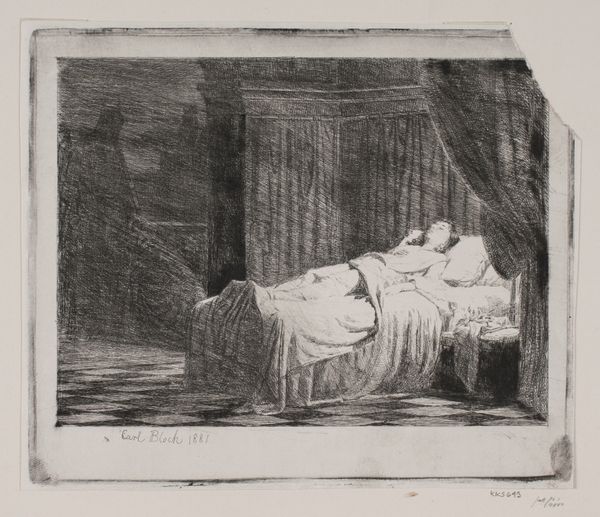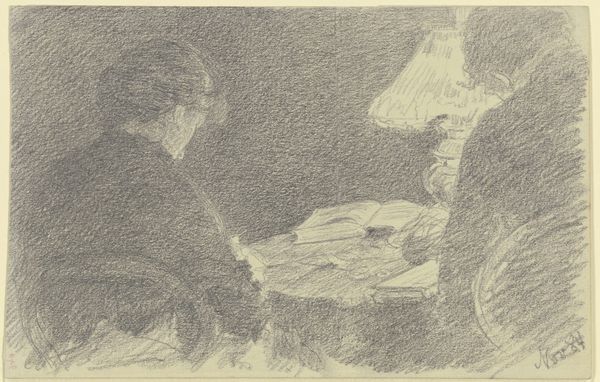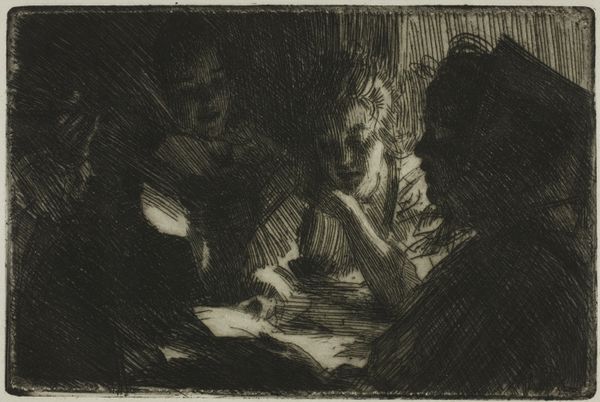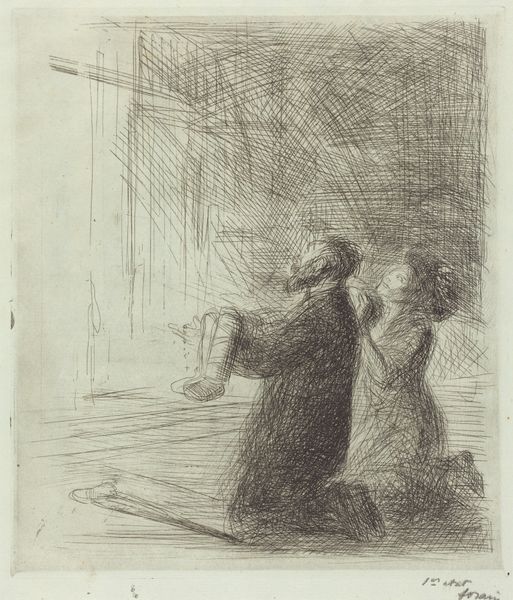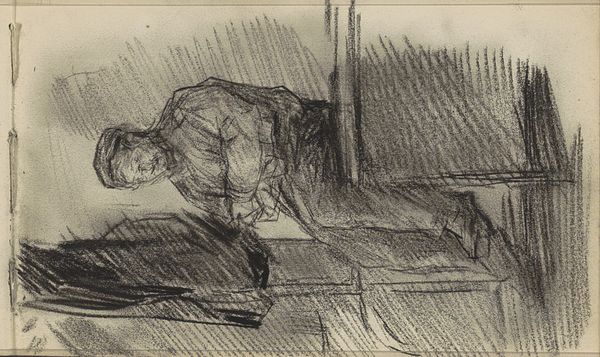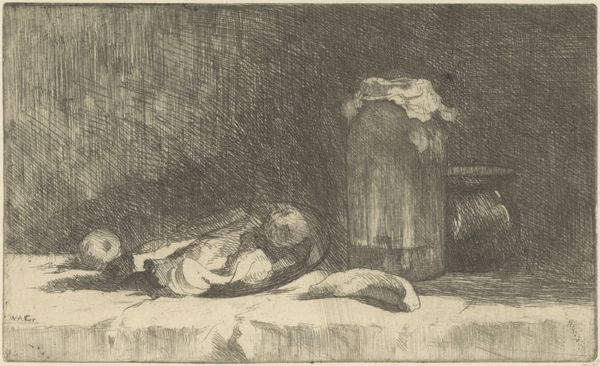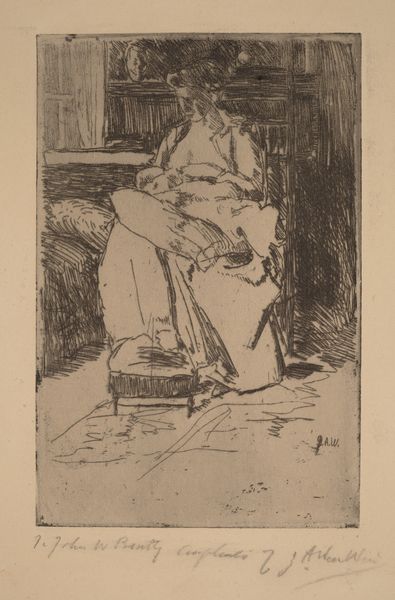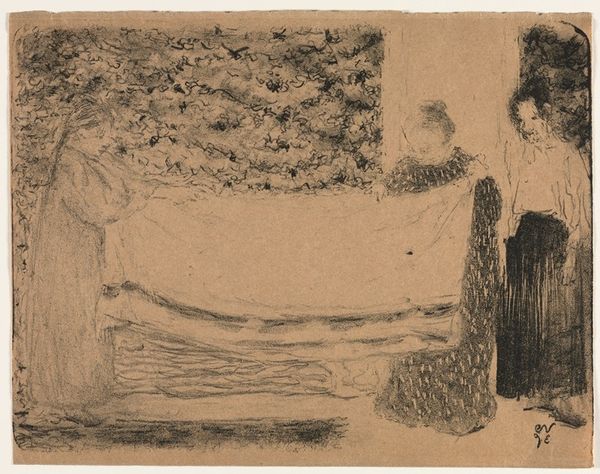
drawing, print, etching
#
portrait
#
drawing
# print
#
etching
#
figuration
#
pencil drawing
#
genre-painting
#
realism
Copyright: National Gallery of Art: CC0 1.0
Curator: This is Jean-Louis Forain's "Lawyer Going through a Brief," an etching created around 1909. What strikes you first? Editor: The gloom. The scratching of the etching tool. It feels like secrets are being unearthed in a dimly lit corner, perhaps in some dusty archive. Curator: Exactly. Forain captured those moments when legal theatrics met backroom deals. This etching isn't just a portrait; it's a snapshot of societal undercurrents. The nervous client hovers behind, and all around, those frenzied cross-hatchings embody both frantic activity and murky motives. Editor: It is all frantic, isn't it? How was the print actually created? The image looks almost like nervously scribbled notes, capturing the transient anxieties of both the lawyer and client—not that the technique conveys moral judgment in itself, though. And were these prints widely distributed at the time? How affordable were they for different segments of society? Did this affect their role in shaping public perception of legal figures? Curator: Those are vital points. Prints like these gained prominence with industrial advances. I would suppose that, given the labor and the detail here, prints would have circulated among a class of bourgeoisie looking for reflections on Parisian life—critical ones perhaps. Editor: This begs the question, what kind of ink, paper, and press were used, and were the materials sustainable for widespread art consumption. Forain clearly wasn’t afraid to use the medium to its fullest potential. There is very little 'positive space,' and his textures create this shadowy world where you just can’t make out anything. I guess his social critiques didn’t come from nowhere... Curator: Yes, exactly. It feels like peeking into a world on the fringes, right? Forain sees the pathos there too; maybe it’s not quite ridicule. What I also appreciate about it is its incomplete and unfinished sensibility. Editor: Definitely. By foregrounding materiality and production processes, and integrating insights of art and labor history, one starts to see 'genre paintings' as enmeshed with technology and society. Curator: Precisely! It also reminds us that we, as viewers, come with our own social contexts—shaping how we perceive artworks such as this. The more angles, the better.
Comments
No comments
Be the first to comment and join the conversation on the ultimate creative platform.
